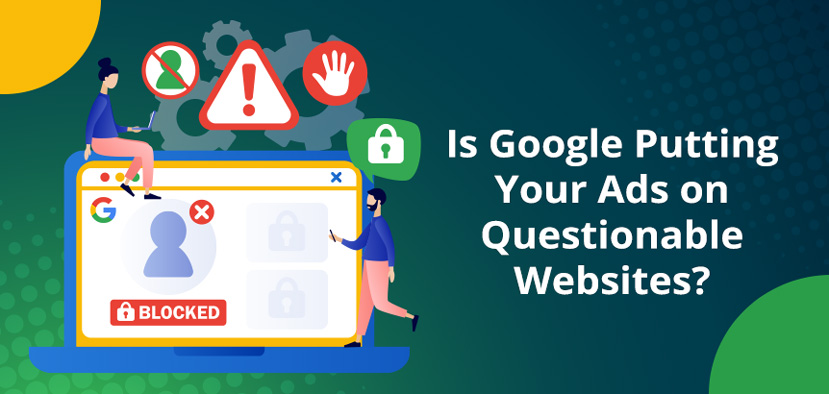Do You Know Where Your Google Ads Are
December 01, 2023
1 min 39 sec read
Google is starting to get as much press as Elon and X.
We hate to be the bearer of bad news, but somebody has to do it.
 Google might be putting your ads in questionable places
Google might be putting your ads in questionable places. The company is currently being accused of putting Search ads on non-Google websites, including porno sites, pirated content sites, and those websites on the dreaded blacklist.
Many media buyers who assumed their campaigns ran on Google.com have recently found that their ads appear on compromising websites within the Google Search Partner (GSP) network.
This is a big deal. Compromising the placement of your ads can hurt your brand's reputation and can reduce the effectiveness of those ads. If this is true, Google has put advertisers and their brands at risk, both from a reputation standpoint and by wasting ad spend.
So, how has Google responded to these allegations?
Deny, deny, deny.
Adalytics, a crowd-sourced advertising performance optimization platform designed to review and improve digital advertising, has discovered a huge hole ($10.5B) in ad spend in Google's search partners program, which could indicate that Google benefits from showing your ads in places where they shouldn't appear.
Dan Taylor, Vice President of Global Ads at Google, said, "Adalytics has established a track record of publishing inaccurate reports that misrepresent Google's products and make wildly exaggerated claims."
He says that Google will review the Adalytics report but maintains that analysis of the sites in question and the limited information shared with Google did not reveal any ad revenue being shared with sanctioned entities.
It's hard to say how much of this is valid. It all stems from an "unnamed" Fortune 500 company that was surprised to discover its ads being served up on non-Google websites, including porn websites, Iranian websites, and those listed on the Treasury OFAC SDN list.
The company even claimed its ads were run on a website specifically added to its account-level domain exclusion list (blocklist) several years earlier.
The "unnamed" Fortune 500 company in the study couldn't produce reports that detail specific websites where its search ads appeared in the GSP network. That means there's no way to measure or even confirm the company's exposure on those questionable sites.
What can you do about it? Probably not a lot. You could opt out of Google Search Network, but there doesn't seem to be enough solid info yet to warrant such a move.
Now, if you see your search ads appearing on pornographic sites, that'll be another matter.
Want to read this in Spanish?
Spanish Version >>
